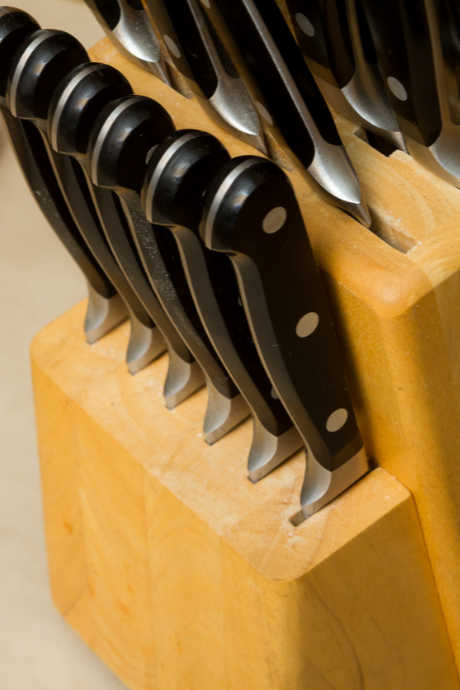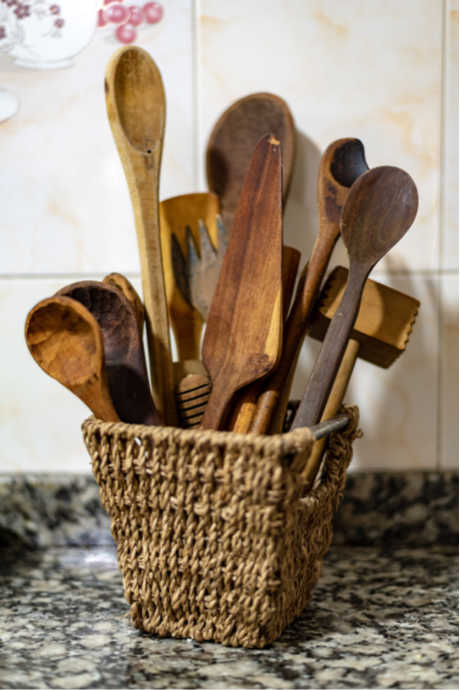Keep It or Toss It: Cutlery and Tools
Posted by Julie on May 20th 2019
Big ticket items like cookware and small appliances are memorable purchases that usually involve forethought. Smaller kitchen items often don’t receive as much consideration, even though they’re just as essential to food preparation. We’re talking about knives, graters, zesters, and all of those other key utensils you use every day. Some of them may last for decades, while others may need to be replaced routinely. Keep reading to learn more about caring for cutlery and tools, when to hang onto them, and when to say goodbye.
Keep It: How to Care for Cutlery and Tools
The longevity of your cutlery will depend in large part on the quality of cutlery you buy. Cutlery quality is closely related to price. That said, a beginner in the kitchen doesn’t need a full set of top-of-the-line Japanese knives. Even if you spend top dollar on your cutlery, it can be damaged by neglect or carelessness.
We’ve already explored how to keep your knives sharp. That guidance applies whether you own introductory stamped stainless steel knives or forged, hand-sharpened carbon steel knives that hail from Solingen or Seki (the two knife capitals of the world). Two key ways to prolong the life of your cutlery are washing knives by hand and storing them safely. The harsh environment of your dishwasher means more wear and tear on your cutlery, dulling the blades and damaging the handles. Allowing your cutlery to rattle around in a drawer with dozens of other tools is not only dangerous, but you also risk dulling and chipping the blades. Taking scrupulous care of your knives will extend the time before you need to replace them.

The gold standard among graters and zesters are those made by Microplane. They began as woodworking tools, but they soon grew to become fixtures in the kitchen. The teeth of Microplane graters and zesters are photo-etched to define and sharpen each one. They stay sharper longer, grating and zesting more efficiently with less effort. In fact, a light hand is all your need, so you don't press your grater or zester teeth flat.
We offer the same recommendations for prolonging the life of your graters and zesters as we do for your cutlery: Take a few extra minutes to wash them by hand and store them with care. Rinse these tools with warm water immediately after use. After rinsing, use a cleaning brush to remove any remaining particles. Brush in the same direction as the teeth to avoid dulling them. Then store your graters and zesters in a plastic cover to protect those teeth, as well as your fingers when you reach into the drawer.
Wood, bamboo, stainless steel, and silicone utensils are all excellent choices for their durability. Stainless steel and silicone are both dishwasher safe and require no extra upkeep. Wood and bamboo, on the other hand, need extra care to keep them in good condition. Similar to cutlery, graters, and zesters, kitchen utensils made of wood or bamboo will fare best when hand washed. The harsh conditions of a dishwasher, plus the extended exposure to moisture, will lead wood or bamboo utensils to dry out and crack.

Wood and bamboo are also prone to staining and will absorb strong food flavors over time. To help prevent stains, rinse your utensils immediately after using them with foods like berries, beets, or tomatoes. You can use a mixture of baking soda and water to help reduce food odors on your wood utensils, or rub them with lemon. However, neither of these occurrences warrant replacement of your kitchen tools.
Finally, you can keep your wood and bamboo utensils in peak condition by applying mineral oil or beeswax. In fact, you can even rub rough spots with fine-grain sandpaper to smooth them out beforehand. But don’t use any sort of food oil for this purpose, as it will turn rancid.
Toss It: When to Replace Cutlery and Tools
Even top-quality cutlery and tools eventually wear out and need to be replaced. Ideally, you’ll choose items that are built to last and take good care of them over the years. But if you’re wondering whether it’s time to shop for new knives, graters, zesters, spoons, spatulas, or other kitchen tools, we’ll help you identify the telltale signs.
A forged steel knife with a full tang and a riveted handle will be exceptionally durable. Depending on the type of steel used for the blade, you should be able to sharpen, hone, and re-sharpen it for many years. But if you find the knife no longer sits comfortably in your hand, or it feels too heavy, or it doesn’t fit the way you cook, consider replacing it. Likewise, if you can’t sharpen the blade adequately, or it won’t hold an edge for more than a meal’s worth of preparation, your knife has definitely seen better days.
Other hints that it’s time to go knife shopping include damage to the blade or handle. If the blade is chipped or bent, or the handle has loose or lost rivets, or the end cap is missing, you need a new knife. This sort of damage isn’t just aesthetic; it’s a safety issue. A sharp, well-balanced knife with an intact blade is a safer knife.

With zesters, you’ll know your tool is still in good shape when it turns out dry, fluffy zest. A dull zester will give you a wet, clumpy mound. With graters, gauge how much pressure you’re using to grate cheese, chocolate, or vegetables. If it requires more effort than usual, your grater has run its course. Flattened teeth will make both tools less effective, no matter how sharp those teeth may still be.
Finally, you may have hand washed your wood or bamboo utensils, patted them dry, gently sanded any rough spots, and rubbed them with mineral oil, but they’ve still developed cracks. Wood simply doesn’t hold up the way stainless steel does. Rest easy knowing you’ve treated your tools well, and start looking for new ones. You don’t want to use cracked wooden utensils, as those cracks can harbor food particles and promote growth of bacteria.
We hope this post was helpful. Don’t miss the previous one, all about when to replace nonstick cookware. The next post in this series will cover cast iron cookware.
 Free shipping over $49
Free shipping over $49










